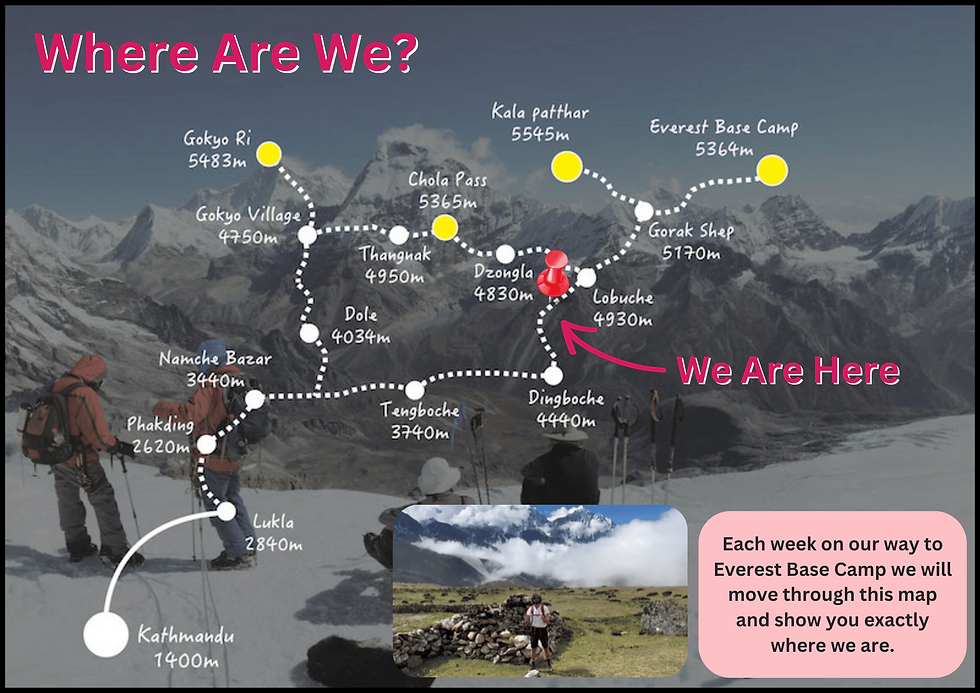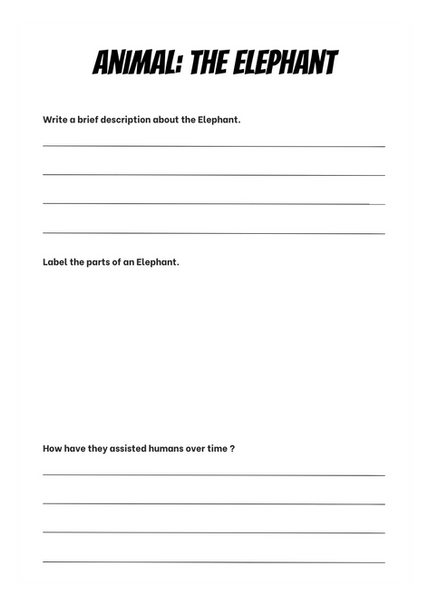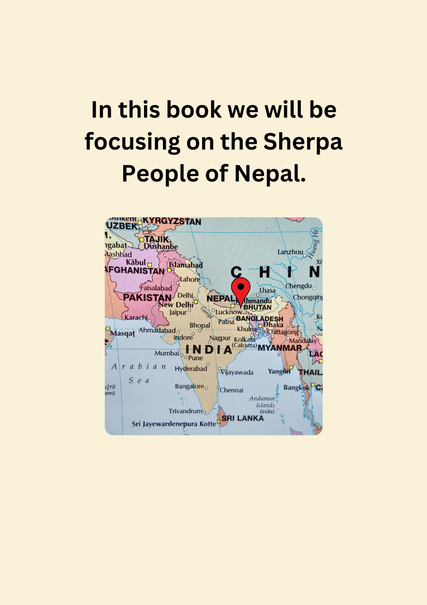Cultures Around The World
Learning Sequence 6
Introduction With Gavin
This week, students will independently research how different cultures utilize their local geography to enhance their livelihoods. They will then creatively design a model that represents these geographical adaptations using materials like clay or recyclable items.
This project encourages students to explore global diversity in environmental adaptation and express their findings through inventive, hands-on crafting, culminating in a presentation that showcases their understanding and creativity.
This week, we’re learning from high in the Himalayas, about 5,000 meters up. After a six to seven day trek, we’re on a wide plateau in a glacial trough. This landscape is crucial for the local Sherpa community.
The area is full of green plants which help feed the yaks that are very important here. Yaks carry crops and provide milk and meat for the Sherpas. We’re exploring how the land shapes the way people live.
The soil and rocks here are worn down by water and wind, making them perfect for building. There’s a small yak farm behind me where Sherpas keep yaks warm during the freezing winters, when temperatures can drop to almost minus 20 degrees Celsius.
These shelters are made from local slate and driftwood, showing how the Sherpas use what’s around them to survive the cold.
This week, think about how the geography in your chosen culture helped the people live and write about it in your world cultures booklet.
Remember, different places have different ways of living, but we all find ways to adapt. Let’s learn how we are all connected through our ingenuity.
En Route to Everest - Where are We?
This activity involves tracking a journey to Everest Base Camp on a map each week, offering students a global perspective.
Teachers can use this to encourage research on Sherpa culture and remote villages, enriching students’ understanding of diverse lifestyles and geographical awareness.
Throughout this course, we are making our way to Everest Base Camp, located at an altitude of 5,364 meters. Each week, you can track our progress on the map provided. I encourage you to delve deeper into the remote villages we visit to discover the unique lifestyles of the Sherpa people.
This week, we are broadcasting from just outside Dingboche, situated at 4,410 meters. If this piques your interest, take the opportunity to learn more about this fascinating area.

Weekly Keywords
Introduce the spelling word list and choose from this list of tasks that can be repeated and expanded upon if necessary.
Copy the words into a spelling list/Vocabulary book for later reference.
Put each of the new words into a sentence and underline the new vocabulary in red pencil
Place the words in alphabetical order in a list.
Use a dictionary to define each of the words and place them into a vocabulary book.
Try to represent each of the words using a picture or a symbol and play the guessing game. (which image is matched to which word)
Write a paragraph containing all of the new vocabulary.
Make a vocabulary wall containing all of the new words.
Use a thesaurus to find synonyms for the words and create a synonym list.
These words will help you during this week’s lesson. You may already know some of these words however practice makes perfect!
First, read the words and then try to define them as simply as possible.
An example has been completed for you. You can write these into your books, and draw a picture to match or simply complete the task card.

Read and Discuss - ‘Animals Around the World’
This activity encourages students to independently engage with task cards that delve into Nepalese and Sherpa cultures, aimed at improving their reading and comprehension abilities.
Students will collaborate to discuss the content thoroughly and then move on to address progressively challenging questions. This process promotes independent learning and critical thinking, which are essential for advancing their reading skills and deepening their cultural knowledge.
Each week, you’ll receive a task card that provides insights into the culture of the Nepalese and Sherpa people.
Collaborate to thoroughly read through the material provided. After discussing and comprehending the content, proceed to answer the comprehension questions included. These questions are designed to test your understanding, escalating in difficulty up to Level 4, which presents a significant challenge.
Keep in mind the methods we’ve used to collect this information, as you will apply similar techniques in your own projects. This week, our focus is on the diverse animal species of Nepal, followed by a series of questions about them.
Week #6 - Progress and Planning (Pushing Forward!)
In this activity, students will take a moment to reflect on their achievements with SDG 15 – Life on Land. They will evaluate their progress, acknowledging completed tasks by marking them with a red tick.
Encourage them to establish new objectives based on their successes, promoting a sense of accomplishment and enhancing their dedication to environmental conservation. This step will help them stay motivated and focused on making a positive impact.
Welcome to week six of our journey with SDG 15 – Life on Land! You’ve been making fantastic progress, and it’s inspiring to see your dedication. This week, take a moment to reflect on your journey so far – mark off the completed tasks on your card and celebrate your accomplishments!
Now, pair up with a classmate and discuss the next steps in our SDG 15 project. You may only have a couple more tasks left to complete and that’s great news.
Let’s use this momentum to advance our goals. Document your actions and their impacts on conserving our planet’s terrestrial ecosystems.
Your efforts are truly making a difference.
Keep up the great work as we move forward with more challenges. Your passion and commitment are key to making a positive impact on our world.
You’re almost there!! Well done to you!

Research Project - Animals and Humans
This week, students will explore the dynamic history of human-animal relationships, researching how animals have served as workers, companions, and more throughout various historical periods.
They will use structured research methods outlined in their booklets to document their findings. The goal is to uncover and share enlightening examples of how animals have been crucial to human survival and cultural development. Upon completing their research, students are encouraged to disseminate their new knowledge, particularly to those unfamiliar with these insights, thereby spreading awareness and appreciation of these historical interactions.
This week, we’re diving into the fascinating history of the relationship between animals and humans. It’s incredible to consider the various roles animals have played in human lives over millennia!
Your task involves some detective work. Investigate different historical eras to discover how animals were utilized by people. Did they serve as workers, companions, or perhaps in some other vital capacity?
Please follow the instructions on your booklet to structure your research and document your findings about the interactions between humans and animals throughout history.
You’re likely to uncover some captivating examples of how importantl animals have been to our survival and culture. It’s thrilling to learn about these enduring partnerships and how they’ve shaped our world!
Once complete you may wish to give your work away to somebody who has no idea about what you have just found out!!
Natural Resources Around the World
This task invites students to explore the historical bond between humans and animals, encouraging them to investigate how various cultures utilize natural resources ethically. Teachers are to guide students in researching their chosen culture’s resource use, emphasising the importance of sustainability and empathy for environmental impacts.
The goal is to foster ethical reasoning and a deeper understanding of our responsibility to protect resources for future generations.
As we now understand the history of the connection that animals and humans have had over thousands of years, it is now time to explore how your chosen culture utilises resources. We have provided you with eight options to choose from, and we want you to investigate how your selected culture or civilisation uses them to assist the community with life.
We also want you to appreciate how precious these resources are by researching how we can protect them for future generations.
Please review the task card as an example and then conduct your own research based on your own culture or civilisation.

Research Questions on Animals and Geography
This activity tasks students with independently researching transportation’s history, utilizing a set of provided questions. They’ll draw from various sources to compile detailed insights, aiming to enrich a new book chapter. The focus is on fostering autonomous learning and synthesizing information from diverse perspectives.
As you prepare to add a new chapter on animals and geography in your book, here’s a set of research questions aimed at assisting you in collecting all the necessary details.
Please refer to page 6 of the book template we’ve provided and use these research questions as a guide to gather sufficient information for including a thorough section on animals and geography in your book.

Adding Your Sixth Page - Geography and Animals
Week 6, students will delve into the unique interplay between animals, geography, and their chosen culture. This assignment pushes them to explore the ecological and geographical aspects that influence cultural practices, shedding light on how local environments shape interactions with native fauna.
Leveraging Canva, they’ll craft visually engaging pages for their booklet, honing their digital skills further. This process not only improves their understanding of digital tools but also enhances their ability to present complex information in creative and accessible ways..
Week 6 is all about exploring the fascinating relationships between animals, geography, and the culture you’re studying.
Your task this week is to dive into the types of animals considered important in your chosen culture and how the local geography shapes the way people live and interact with these animals. Discover how different landscapes, from mountains to rivers, influence cultural practices and the everyday life of the people.
Think about how to present the information on animals and geography in a compelling and clear way. Use the template we provided to help structure your page. Just click the ‘Create in Canva’ button below to start assembling your research.
We’ve also prepared a new page for you to add to our book.
With each week and each new page, your booklet is evolving into a detailed guide through the diverse aspects of your chosen culture. Let’s continue this exciting journey of exploring the integral role of animals and geographical features in shaping the traditions and lifestyles of the culture!
Real-World Learning - Create A Landmark Matching Game For Younger Children
This activity involves students crafting prayer flags from recycled t-shirts, fostering entrepreneurial skills. They’ll learn product development, sustainability, and salesmanship. Setting up a stall at school hones marketing and customer interaction abilities.
Proceeds can support a charitable cause, reinforcing social responsibility in business. This project cultivates creativity and practical business acumen, integrating environmental consciousness with enterprise education.
This task card provides you with examples of famous natural landmarks and the flags of their respective countries. Your assignment is to create images of 16 different natural landmarks, each from a different country, along with the flag that represents that country. This exercise will help you learn about the variety of the natural world.
You have 16 cards to complete. Each card should feature one landmark and its corresponding flag.
After you have finished creating these cards, cut them out along the dotted lines provided. These cards will then be used to play an educational game with younger students to help them learn about these landmarks and countries in a fun and interactive way.
Weekly Inspiration - Animal Imprinting
In this video, we explore the remarkable phenomenon of imprinting, where young goslings form an immediate attachment to the first moving object they encounter post-hatching—often treating it as a parent. This instinctual behavior, first studied by scientist Conrad Lorenz, provides a vivid illustration of animal behavior and adaptation.
As you present this video to the children, emphasize the wonders of nature and the intrinsic behaviors that help species survive. This example not only highlights the bonds formed in the animal kingdom but also offers a gateway to discussions on how filmmakers use such natural phenomena to create compelling documentary content. This will enhance the children’s appreciation for wildlife and the intricate behaviors that are often hidden in the natural world.
Today, we’re going to watch a fascinating video about a unique animal behavior called imprinting. Early in his career, a television presenter met Conrad Lorenz, an Austrian scientist who studied how baby geese, called goslings, can form a strong bond with the first moving object they see after hatching. In this case, the goslings followed Lorenz as if he were their parent. This video will show us how filmmakers use this imprinting process to work closely with animals in nature documentaries.

.png)























